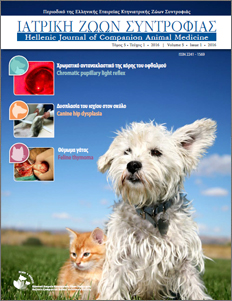Few years have passed since HCAVS was established, and we have already successfully concluded the 7th FORUM and third nomination of a new Administration Board through the elections that were conducted on the 20th of March 2016. Ongoing education programmes, held by the autumnal scientific days and annual regional courses throughout Greece, highlight the necessity for the existence of HCAVS, the success of which is reward itself for all the efforts made by its contributors, members and executives.
Our era is so “caught up” in the speed of development that even when its effects or outcome are identified, they cannot always be explained. Experts have been dedicated to their research for decades. With this in mind, I would say that the last three generations of scientists have been much more fortunate in terms of acceptance, assimilation and use of those results.










 PDF Download
PDF Download